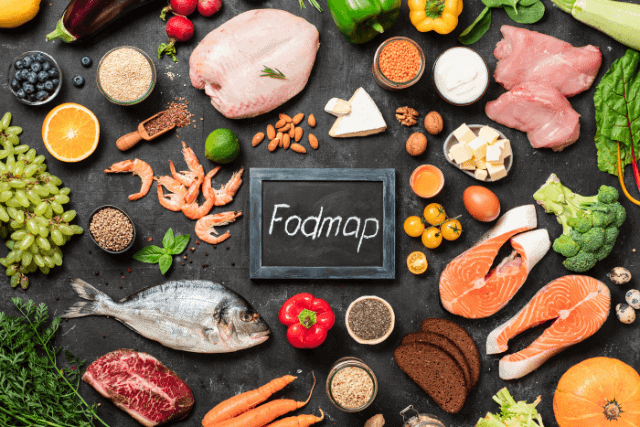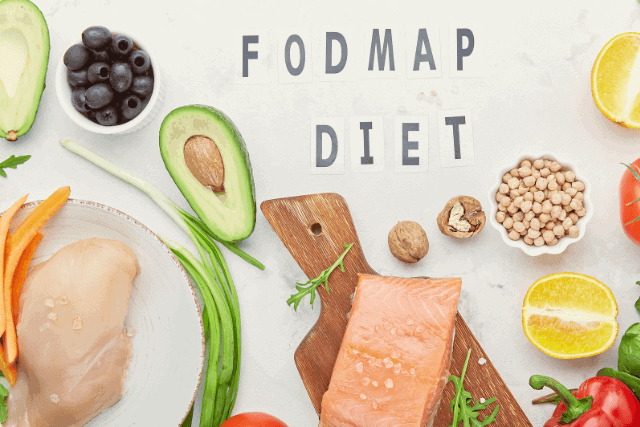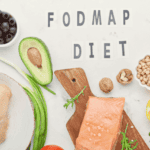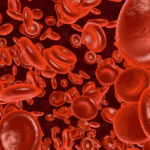Introduction
Imagine waking up every day, constantly plagued by uncomfortable bloating, unpredictable gut troubles, and the frustration of not knowing how to find relief. If you’ve experienced these challenges, you’re not alone. Millions of people around the world struggle with gut troubles that impact their daily lives. But fear not, there is a solution: the Low FODMAP Diet. In this article, we will delve into the transformative power of the Low FODMAP Diet in banishing gut troubles. We’ll explore its effectiveness, provide practical tips for implementation, and guide you on a journey from bloating to bliss.
History of FODMAP Diet
The Low FODMAP Diet has gained significant attention in recent years as a dietary approach for managing gut troubles, particularly irritable bowel syndrome (IBS). Developed by researchers at Monash University in Australia, the diet was first introduced in the early 2000s. FODMAP is an abbreviation derived from the terms Fermentable Oligosaccharides, Disaccharides, Monosaccharides, and Polyols.
The history of the FODMAP Diet can be traced back to the understanding that certain carbohydrates and sugar alcohols found in foods can trigger digestive symptoms in individuals with sensitive guts. The researchers at Monash University identified a group of short-chain carbohydrates and sugar alcohols that were known to be poorly absorbed in the small intestine and rapidly fermented by gut bacteria.
The initial research on the Low FODMAP Diet focused on identifying high-FODMAP foods and understanding their effects on gut symptoms. Through a series of studies, the researchers developed a comprehensive database of FODMAP content in various foods, which has become a valuable resource for healthcare professionals and individuals following the diet.
The Concept Behind FODMAP Diet
The concept behind the Low FODMAP Diet is that by reducing the consumption of high-FODMAP foods, individuals can alleviate gut symptoms such as bloating, gas, abdominal pain, and altered bowel movements. The dietary approach commonly involves two distinct phases: the elimination phase and the reintroduction phase.
During the elimination phase, high-FODMAP foods are eliminated from the diet for a specific period, usually around 2-6 weeks. This phase allows the gut to settle and provides relief from symptoms. Following the elimination phase, the reintroduction phase begins, where specific high-FODMAP foods are systematically reintroduced one at a time while monitoring symptoms. This phase helps individuals identify their personal FODMAP triggers and determine their tolerance levels.
Understanding Gut Troubles
Gut troubles encompass a range of symptoms, including bloating, abdominal pain, diarrhea, and constipation, that can significantly impact one’s quality of life. These troubles often go hand in hand with a condition called Irritable Bowel Syndrome (IBS), a common gastrointestinal disorder. The connection between gut troubles and IBS is profound, with many individuals experiencing worsening of symptoms during periods of stress or after consuming trigger foods. It is crucial to find an effective approach to address gut troubles and regain control over your digestive health.
Unveiling FODMAPs
To understand the Low FODMAP Diet, we must first familiarize ourselves with FODMAPs. FODMAPs, which stands for Fermentable Oligosaccharides, Disaccharides, Monosaccharides, and Polyols, are a group of fermentable carbohydrates that are poorly absorbed in the small intestine. When these carbohydrates reach the large intestine, they can be fermented by gut bacteria, leading to the production of gas and triggering symptoms in sensitive individuals. Common FODMAPs include lactose, fructose, certain types of fibers, and sugar alcohols. By identifying and managing your FODMAP intake, you can gain control over gut troubles and minimize discomfort.
The Low FODMAP Diet: An Overview
The Low FODMAP Diet is an evidence-based approach designed to alleviate gut troubles by reducing the consumption of high-FODMAP foods. The Low FODMAP Diet comprises of two primary phases: elimination and reintroduction. During the elimination phase, high-FODMAP foods are avoided to allow the gut to calm down and symptoms to subside. The reintroduction phase involves systematically reintroducing specific FODMAP groups to identify individual triggers. The Low FODMAP Diet is not meant to be followed indefinitely, but rather as a tool to identify trigger foods and develop a personalized long-term eating plan.
High-FODMAP Foods to Avoid
To effectively implement the Low FODMAP Diet, it’s essential to understand which foods are high in FODMAPs and should be avoided during the elimination phase. Common high-FODMAP foods include certain fruits, vegetables, dairy products, grains, sweeteners, and legumes. These foods can contribute to symptoms such as bloating, gas, and abdominal pain. However, it’s important to note that not all high-FODMAP foods affect everyone the same way, and individual tolerance levels may vary. Alternatives and substitutions for high-FODMAP ingredients are available to ensure a varied and enjoyable diet.
Low-FODMAP Foods to Enjoy

One of the misconceptions about the Low FODMAP Diet is that it severely restricts food choices. However, there is a wide array of delicious low-FODMAP foods that can be enjoyed without triggering gut troubles. These include fruits such as berries and citrus, vegetables like spinach and carrots, lean proteins, gluten-free grains, and lactose-free dairy alternatives.
Low-FODMAP foods are not only gut-friendly but also offer a range of nutritional benefits, including vitamins, minerals, and dietary fiber. Embrace the culinary possibilities with low-FODMAP ingredients and explore new recipes and meal ideas to make your diet exciting and satisfying.
Meal Planning and Preparation
Successful implementation of the Low FODMAP Diet requires careful meal planning and preparation. Taking the time to plan your meals and stock your pantry with low-FODMAP ingredients can help you stay on track and avoid unintended consumption of high-FODMAP foods. Practical tips for meal preparation and organization can make the process more manageable. Batch cooking, labeling food containers, and creating meal plans in advance can save time and energy. Additionally, strategies for navigating social situations and dining out while adhering to the Low FODMAP Diet can be helpful in maintaining your dietary goals without feeling isolated.
Reintroduction Phase: Finding Your Tolerance
The reintroduction phase is a crucial step in the Low FODMAP Diet, as it allows you to identify your individual tolerance to specific FODMAP groups. This phase involves systematically reintroducing one FODMAP group at a time and monitoring your body’s response. By gradually reintroducing high-FODMAP foods, you can pinpoint which specific FODMAPs trigger your gut troubles. It is important to approach this phase with guidance from a healthcare professional or registered dietitian who can provide personalized recommendations and ensure your safety throughout the process.
Long-Term Maintenance and Support
Once you have completed the elimination and reintroduction phases, you will enter the long-term maintenance stage of the Low FODMAP Diet. Transitioning into this phase requires a comprehensive understanding of your trigger foods and the ability to make personalized adjustments. Challenges may arise during this phase, such as reintroducing previously eliminated foods or managing dietary changes in different life situations. Seeking ongoing support from healthcare professionals, such as registered dietitians specializing in gut health, can provide valuable guidance, accountability, and reassurance as you navigate long-term maintenance.
Tips for Adhering to the Low FODMAP Diet
Successfully following the Low FODMAP Diet requires commitment and diligence. Here are some practical tips to help you adhere to the diet and maximize its effectiveness:
A. Keep a food diary: Tracking your meals and symptoms can provide valuable insights into your individual triggers and help you make informed decisions about your diet.
B. Read food labels: High-FODMAP ingredients can hide in packaged foods, sauces, and condiments. Get in the habit of reading labels carefully to avoid any hidden sources of FODMAPs.
C. Meal prep and batch cooking: Spending some time on meal preparation during the week can save you time and effort. Prepare FODMAP-friendly meals in advance and store them in portioned containers for easy grab-and-go options.
D. Stay hydrated: Drinking an adequate amount of water throughout the day helps keep your digestive system functioning optimally and can alleviate some digestive discomfort.
E. Seek support: Connecting with others who are also following the Low FODMAP Diet can provide valuable support and insights. Look for online communities or support groups where you can share experiences and learn from others.
Potential Challenges and Troubleshooting
While the Low FODMAP Diet can be highly effective, it’s important to acknowledge that challenges may arise during the process. Here are some common challenges you may encounter and strategies for overcoming them:
A. Emotional impact: Making significant dietary changes can sometimes affect your emotional well-being. It is common to experience feelings of frustration or being overwhelmed from time to time. Seek support from friends, family, or a mental health professional to help navigate these emotions.
B. Dining out and social events: Eating out or attending social gatherings can present challenges when following the Low FODMAP Diet. Plan ahead by researching restaurants that offer FODMAP-friendly options or communicate your dietary needs to the host when attending events.
C. Traveling: Traveling while on the Low FODMAP Diet requires careful planning. Research local cuisine options, pack low-FODMAP snacks for the journey, and consider bringing portable kitchen tools if necessary.
D. Personalized adjustments: Everyone’s tolerance to FODMAPs is unique. Some individuals may find they can tolerate certain high-FODMAP foods in small quantities, while others may need to avoid them completely. Pay attention to your body’s response and make personalized adjustments accordingly.
Conclusion
In conclusion, the Low FODMAP Diet is a valuable tool in banishing gut troubles and improving digestive health. By understanding the principles of the diet, diligently following the elimination and reintroduction phases, and implementing practical tips for success, you can experience the transformative benefits of the Low FODMAP Diet. While challenges may arise along the way, staying committed and seeking support from healthcare professionals and fellow individuals on the same journey can help you overcome obstacles and achieve a healthier gut and improved overall well-being.
Bonus Recipe: Easy and delicious recipes that are suitable for the Low FODMAP Diet
Recipe 1: Grilled Salmon with Quinoa and Roasted Vegetables
Ingredients:
- 2 salmon fillets
- 1 cup cooked quinoa
- 1 zucchini, sliced
- 1 red bell pepper, sliced
- 1 tablespoon olive oil
- Salt and pepper to taste
- Fresh dill for garnish
Instructions:
- Preheat the grill to medium-high heat.
- Season the salmon fillets with salt and pepper.
- In a bowl, toss the sliced zucchini and red bell pepper with olive oil, salt, and pepper.
- Place the salmon fillets and the vegetables on the grill. Cook the salmon for about 4-5 minutes per side until it flakes easily with a fork. Grill the vegetables until tender and slightly charred.
- In a serving bowl, combine the cooked quinoa with the grilled vegetables.
- Place the grilled salmon fillets on top of the quinoa and vegetables.
- Garnish with fresh dill and serve hot.
Recipe 2: Chicken Stir-Fry with Rice Noodles
Ingredients:
- 2 chicken breasts, thinly sliced
- 8 oz rice noodles
- 1 red bell pepper, thinly sliced
- 1 carrot, julienned
- 1 cup bok choy, chopped
- 2 tablespoons low-sodium soy sauce (make sure it’s gluten-free)
- 1 tablespoon sesame oil
- 1 tablespoon rice vinegar
- 1 tablespoon maple syrup
- 1 tablespoon cornstarch (optional, for thickening)
- Sesame seeds for garnish
Instructions:
- Cook the rice noodles according to the package instructions. Drain and set aside.
- In a small bowl, whisk together the soy sauce, sesame oil, rice vinegar, and maple syrup to make the sauce.
- Heat a large skillet or wok over medium heat. Add the sliced chicken and cook until browned and cooked through.
- Add the sliced bell pepper, julienned carrot, and chopped bok choy to the skillet. Stir-fry for 2-3 minutes until the vegetables are tender-crisp.
- Pour the sauce over the chicken and vegetables. If desired, mix the cornstarch with a little water to make a slurry and add it to the skillet to thicken the sauce.
- Add the cooked rice noodles to the skillet and toss to coat everything in the sauce.
- Garnish with sesame seeds and serve hot.
Recipe 3: Berry Smoothie Bowl
Ingredients:
- 1 cup mixed berries (e.g., strawberries, blueberries, raspberries)
- 1 ripe banana
- 1/2 cup lactose-free yogurt
- 1 tablespoon chia seeds
- 1 tablespoon almond butter (make sure it’s free from added high-FODMAP ingredients)
- Toppings of your choice: sliced almonds, shredded coconut, additional berries
Instructions:
- In a blender, combine the mixed berries, banana, lactose-free yogurt, chia seeds, and almond butter.
- Blend until smooth and creamy.
- Pour the smoothie into a bowl.
- Top with sliced almonds, shredded coconut, and additional berries.
- Enjoy immediately with a spoon.
Note: Feel free to customize the recipes based on your personal preferences and dietary needs. These recipes provide a starting point and can be adapted by incorporating your favorite low-FODMAP ingredients and seasonings.
These recipes are not only delicious but also adhere to the Low FODMAP Diet guidelines. Enjoy these flavorful meals while nourishing your gut and supporting your overall digestive health. By incorporating these tasty and FODMAP-friendly recipes into your meal plan, you can savor the flavors while providing your gut with the nourishment it needs. Remember, maintaining a balanced and gut-friendly diet can contribute to reduced bloating, improved digestion, and a greater sense of well-being. So, don’t hesitate to indulge in these satisfying meals and take delight in the blissful journey of a healthier gut.
Additionally, you might find these articles helpful:









1 thought on “From Bloating to Bliss: How the Low FODMAP Diet Banishes Gut Troubles”